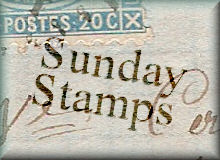 |
| 2010: A Hundred Years of Aviation |
Australia's early aviation history included this flight over Diggers Rest, Victoria in 1910 by the escapologist Harry Houdini. He had imported a French Voisin biplane especially built for him and, as can be seen, it had his name on the tail. After this Australian tour and some well-publicised flights Houdini put the Voisin in storage intending to fly from city to city during his next music hall tour but after his initial enthusiasm never flew again. Unlike the RAF Red Arrows display team
who celebrate their 50th display season this year. The stamps significance is they always appear as part of the Isle of Man TT Festival with displays over Douglas, Peel and Ramsey and this year was no exception. Coincidentally this week's Sunday Stamps theme falls just as the
TT Motorbike Races finished on Friday. The Red Arrow jets have specially up-rated Rolls Royce Turbomeca Adour engines and of course specially installed smoke generation systems for those red, white and blue smoke trails. No major event goes by in the UK without a flypast by the Red Arrows.
The Belgian aerobatics team was called the Diables Rouges or in Flemish, Rode Duivels, but was disbanded in 1977, the year after this cover, but has recently (in 2011) been reformed. The Red Devils is also the nickname of the Belgian national Football team, who will be playing their first match of the World Cup on the 17th of this month and are favourites to win their group and progress to the second round. RAF pilots always seem to have nicknames such as 'Bunny' Warren or Richard 'Dickie' Bird etc and Belgian pilots are no exception as the one who has signed the cover was Lt Martial 'Stony' Vansteenkiste.
I have no idea why one of the first decimal currency regional definitive stamps for Northern Ireland was used on the cover but it does seem a bit random. The cover was flown at RAF Finnigley, decommissioned in 1996 as part of the defence cuts but later developed into Robin Hood International Airport which opened in 2005. RAF Finningley had a long flying history starting off in 1915 as the Royal Flying Corp military airfield. Although the cover celebrates the Battle of Britain the airfield itself in World War II was part of RAF Bomber Command. During the Cold War this would have been where the atomic weapons would have been taken out of store and put on aeroplanes. Yikes. On a more positive note this was also where the RAF Search and Rescue teams operated from.
The Battle of Britain Air Display was first held at RAF Finningley in September 1948 and became the largest and most popular one day display of military hardware and aerobatics in the country. I found this photo of Belgium's 1976 Red Devils team on a site devoted to the different types of
pilot helmets, yes really!
From L to R, standing: Jean-Luc
Storder, Martial 'Stony' Vansteenkiste, Charly Hubert, Guy Lambermont.
From left to right, knealing: Gérald Dessart, Leo Lambermont,
Phil Demoulin.
Coming back to the present day do you fancy a "Day Out with the Red Arrows"?




























